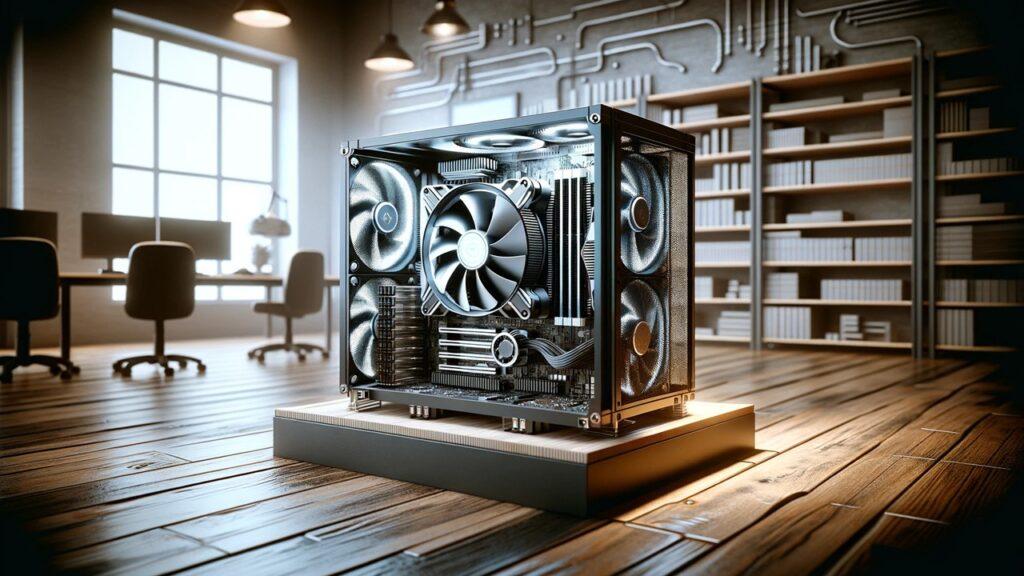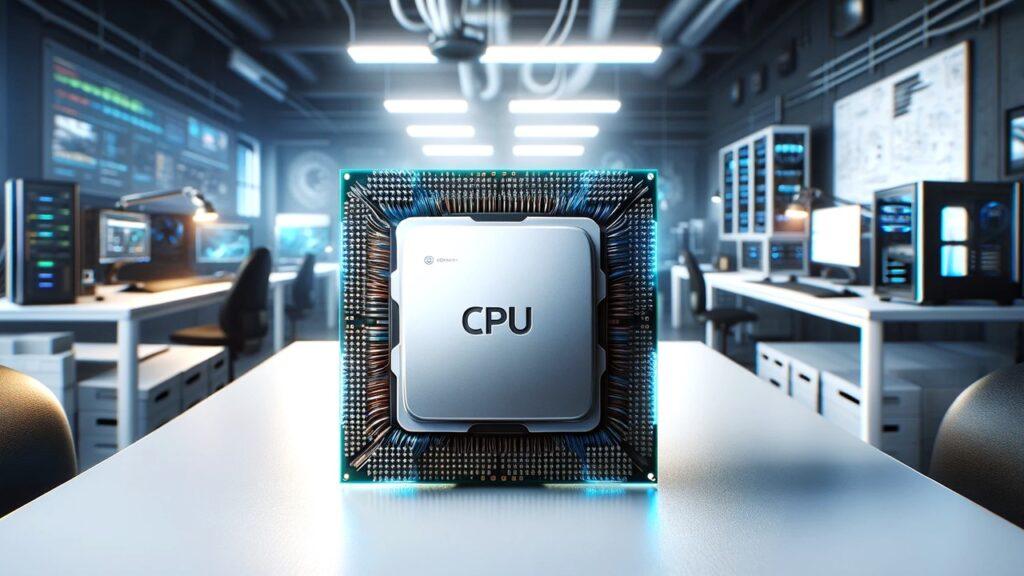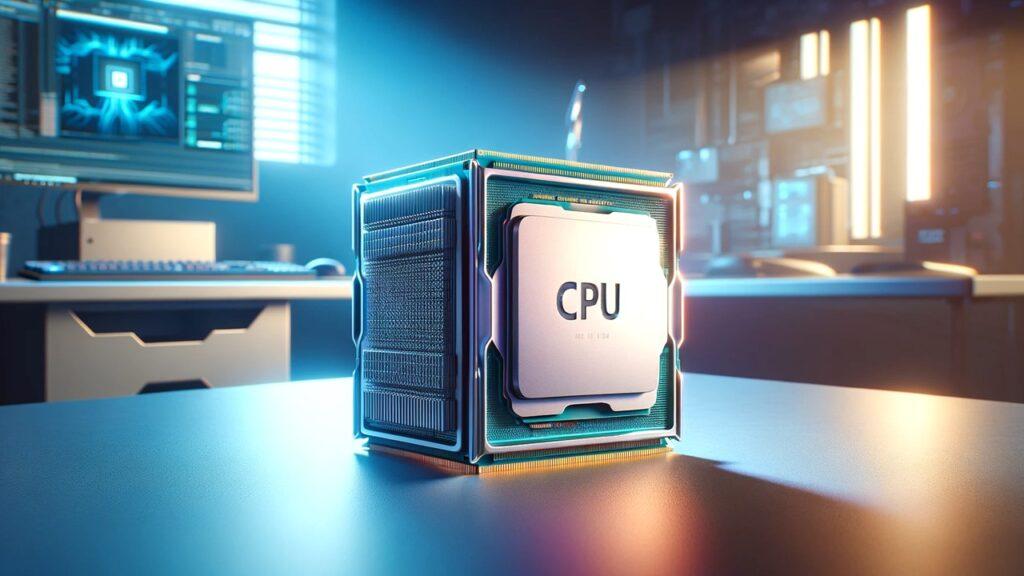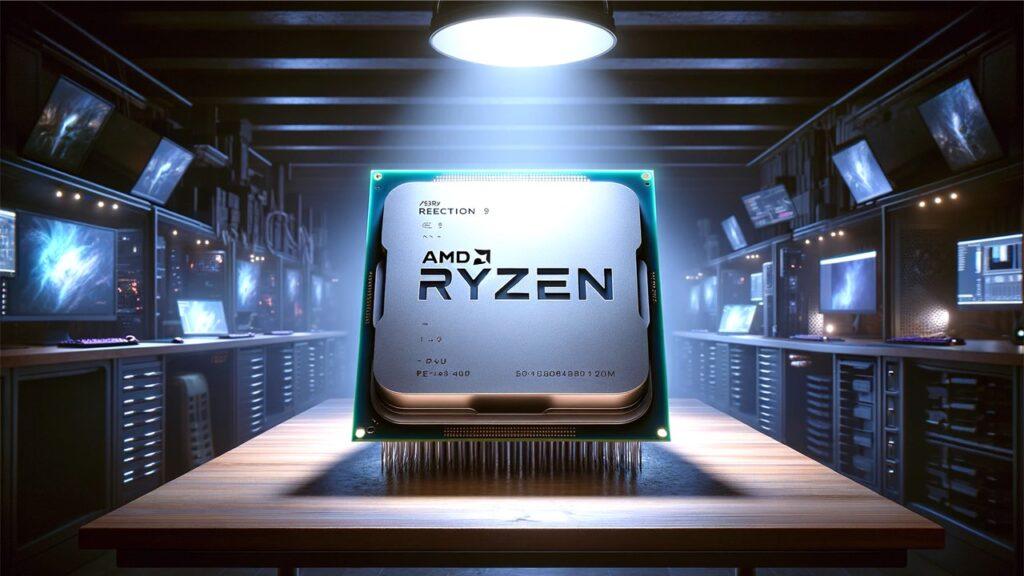
Whether you’re gearing up for a gaming marathon or tackling intensive computational tasks, the efficiency of your CPU is paramount to your system’s performance. Now, imagine a scorching summer day influencing not just your comfort but also how well your computer operates. This scenario introduces us to “the impact of ambient temperature on CPU efficiency,” a topic that might not dominate everyday conversations but significantly affects your computer’s functionality. Elevated temperatures can throttle the speed at which your CPU operates, leading to slower response times and even system instability. By understanding how ambient conditions influence your processor, you’re better equipped to maintain peak performance, ensuring your computer keeps pace with your demands, regardless of the mercury’s rise.
What is CPU Efficiency?
When diving into the world of computing, understanding CPU efficiency is crucial for optimizing the performance of your computer. Essentially, it’s about how well your CPU handles tasks without wasting resources, crucial in everything from simple browsing to advanced gaming. The essence of CPU efficiency hinges on maximizing output while minimizing energy consumption, a balance that is vital for both environmental sustainability and your utility bills.
Metrics such as CPU utilization rates, power consumption, and heat generation play key roles in measuring this efficiency. A high utilization rate without excessive power use typically indicates a more efficient CPU. Furthermore, managing the heat output is also vital, as excessive heat can reduce the lifespan and performance of your processor, linking closely to the impact of ambient temperature on CPU efficiency.
By closely monitoring these metrics and understanding their implications, users and manufacturers can significantly enhance CPU performance and durability, making it a topic of high relevance in today’s tech-driven world.
Effect of Ambient Temperature in Technology
Have you ever noticed your laptop becoming a lap-warmer on a hot day? This brings us to the influence of ambient temperature on technology, particularly on electronic devices. Ambient temperature, the air temperature surrounding a device, can drastically affect its performance and longevity.
From smartphones to server rooms, consistent and optimal CPU temperatures are pivotal for preventing performance degradation or hardware damage. For instance, elevated ambient temperatures can lead to increased CPU temperature, which in turn may trigger thermal throttling in CPUs, where the CPU automatically reduces its speed to cool down. This not only impacts efficiency but can also hasten the need for CPU overheating fixes.
Understanding and managing the effects of ambient temperature on computers is a cornerstone of maintaining device integrity and performance. As our reliance on technology grows, so does the necessity to develop more sophisticated cooling technologies for CPUs, ensuring that our devices keep running smoothly regardless of external temperature conditions.
How Does Temperature Affect CPU Performance?
The link between ambient temperature and CPU performance is more significant than many might expect. As ambient temperature rises, CPUs can overheat, leading directly to decreased efficiency and potential system instability. This is a classic case where the impact of heat on CPUs manifests visibly, affecting everything from your computer’s speed to its ability to perform multiple tasks simultaneously.
Heat influences the electronic components of a CPU, increasing resistance and slowing down electron flow, which can degrade the CPU thermal performance. This is why maintaining optimal CPU temperatures through effective temperature management for PCs is crucial. For instance, using advanced CPU coolers or integrating air vs. liquid CPU cooling systems can help mitigate these effects, ensuring sustained performance even under strain.
Ending on a practical note, it’s evident that proactive temperature management can alleviate many common heat-related issues in computers. By employing the right CPU cooling solutions and adhering to CPU temperature guidelines, users can significantly improve their system’s reliability and efficiency, making ambient temperature on CPU efficiency a manageable aspect of tech maintenance.
Analyzing the Efficiency Impact
As we delve deeper into how the ambient temperature on CPU efficiency shapes our computing experiences, it’s essential to break down the specific aspects of this influence. Heat is not just an inconvenience; it directly impacts the core functions of your CPU, shaping everything from processing speeds to power usage.
Temperature vs. CPU Speed
Ever wonder why your laptop seems sluggish on a hot day? The correlation between ambient temperature and CPU speed is a critical factor in understanding CPU thermal performance. As temperatures rise, processors may experience thermal throttling, where the system automatically lowers speeds to reduce heat generation.
This safety mechanism, while necessary, leads to noticeable slowdowns and can affect everything from simple applications to demanding gaming sessions. For instance, someone using budget CPUs for gaming may find performance particularly compromised in warm conditions without adequate cooling solutions.
The warmer the environment, the harder it is for your CPU to maintain its intended speed, leading to frustration and reduced productivity.
Temperature vs. Power Consumption
Moreover, there’s a significant interaction between ambient temperature and CPU power efficiency. High temperatures not only strain the hardware but also increase the energy required to perform tasks. This can lead to higher electricity bills and a greater environmental impact. For example, systems without efficient CPU cooling solutions, such as those involving budget motherboards for Intel desktops, might consume more power under thermal stress.
Thus, managing ambient temperature effects on computers is not only about maintaining speed but also about enhancing power efficiency and sustainability.
Ways to Maintain Optimal Temperature for Your CPU
Achieving and maintaining the right CPU temperature is pivotal for both performance and longevity. Let’s explore effective strategies and technologies that can help.
Cooling Solutions
Discussing cooling technologies for CPUs, we find a range of options from air vs. liquid CPU cooling to innovative phase change methods. Each technology offers different benefits, suited to various needs and budgets. Air coolers, often seen in budget CPU air coolers, provide a cost-effective solution and are sufficient for moderate use.
On the other hand, liquid cooling systems, such as AIO liquid coolers for high-performance gaming, offer superior cooling efficiency, crucial for overclocking or intensive computing tasks.
Choosing the right cooling solution can significantly improve CPU thermal performance, ensuring that your system runs smoothly even under load.
Best Practices for Temperature Management
Maintaining optimal performance extends beyond installing a good cooler. Regular maintenance, including cleaning dust from vents and replacing thermal paste, is crucial.
Monitoring tools can help keep an eye on CPU temperature, alerting you to potential overheating before it becomes a serious issue. Additionally, ensuring your system has good airflow with well-organized components inside the case can prevent hot spots from forming.
By adopting these best practices, you not only safeguard your CPU’s longevity but also ensure it operates at peak efficiency, no matter the external conditions. Each of these steps helps stabilize the ambient temperature on CPU efficiency, turning what could be a detriment into a well-managed aspect of your computing setup.
Impact of Ambient Temperature on Your CPU’s Efficiency
Navigating the technical world of CPUs can be as tricky as planning a summer trek across the desert—both demand respect for the environment to ensure optimal performance. The impact of ambient temperature on CPU efficiency is a theme that cannot be overstressed, particularly as we push our devices to their operational limits. From office PCs to hardcore gaming rigs, each unit experiences the effects of thermal changes differently, making it a crucial point of consideration for any tech enthusiast or professional.
The first impact is direct: as the ambient temperature rises, so does the CPU’s internal temperature, leading to reduced speed and thermal throttling. This response can slow down your processes significantly, affecting everything from your system’s boot time to its ability to run complex software smoothly. Furthermore, if the ambient temperature is not managed, it can lead to CPU overheating, which not only dampens performance but can also shorten your system’s lifespan dramatically.
Additionally, there’s a knock-on effect on power consumption. CPU cooling solutions work harder as temperatures rise, thereby drawing more power. This increased energy use not only ups your electricity bills but can also put undue stress on your system’s overall energy efficiency. Implementing effective cooling technologies for CPUs, whether air or liquid, becomes not just about maintaining speed but also about conserving power and extending the life of your components.
Effective management of ambient temperature is akin to fine-tuning a high-performance engine; it’s about precision and strategy. Utilizing advanced temperature management for PCs, including regular monitoring through CPU temperature monitoring tools, ensures that your machine delivers top performance without burning out under pressure.
Wrapping It Up!
As we wrap up our exploration into how ambient temperature affects CPU efficiency, let’s recap the critical insights and underscore their importance. Understanding the impact of heat on CPUs isn’t just about geeking out on tech specs; it’s about ensuring your system runs efficiently, reliably, and sustainably over its intended lifespan.
We’ve seen how elevated temperatures can throttle back CPU performance, causing slowdowns that can frustrate users and reduce productivity. We’ve discussed the various cooling solutions, from air vs. liquid CPU cooling, and highlighted the importance of choosing the right system for your needs. Moreover, we’ve touched upon the broader effects of temperature, such as increased power consumption and potential damage to internal components.
Managing ambient temperature is not just a recommended practice; it’s an essential aspect of digital stewardship. Whether you’re gaming, creating, or just browsing, keeping your CPU cool is synonymous with keeping it operational. By embracing right practices for CPU temperature management, you ensure that your computer not only runs cool but also stands the test of time, turning potential meltdown into sustained performance.
So, as you continue to push the limits of what your computer can do, remember the pivotal role of ambient temperature on CPU efficiency. With the right knowledge and tools at your disposal, you can not only prevent thermal issues but also enhance your overall computing experience. Stay cool, and keep computing!
Related FAQs
Can High Ambient Temperatures Cause Permanent Damage to CPUs?
Yes, prolonged exposure to high temperatures can permanently damage CPUs, affecting performance and lifespan.
What Is the Ideal Operating Temperature for a CPU?
The ideal operating temperature for most CPUs ranges from 70°C to 85°C under load.
How Can I Check My CPU’s Current Temperature?
You can check your CPU’s temperature using hardware monitoring software like HWMonitor or Core Temp.
Are There Warning Signs of Overheating I Should Watch For?
Yes, frequent system crashes, unexpected shutdowns, and performance slowdowns are common signs of overheating.
Does Ambient Temperature Affect All Types of CPUs Equally?
No, the impact varies depending on the CPU design, usage, and existing cooling solutions.

Josh is a lifelong tech enthusiast with a passion for building powerful, reliable PCs. With years of hands-on experience, he shares practical advice to help readers make smarter choices, whether it’s picking the right components or solving build issues at home. Josh focuses on what really matters in real-world use, offering honest insights that come from testing, tinkering, and learning along the way. He’s here to make tech feel a little less overwhelming and a lot more useful.




